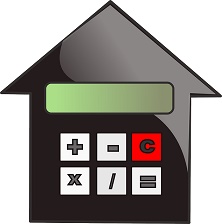 In case you set your alarm clock to go off when it was time to buy a home, that clang you may be hearing from somewhere in the distance could be it (figuratively speaking, of course). The reason has to do with the direction of Highlands mortgage rates (among others).
In case you set your alarm clock to go off when it was time to buy a home, that clang you may be hearing from somewhere in the distance could be it (figuratively speaking, of course). The reason has to do with the direction of Highlands mortgage rates (among others).
Now, I realize this could come across a little bit like Aesop’s boy who cried ‘Wolf’ since a year and a half ago the experts were unanimous in predicting that mortgage rates would rise throughout 2014 (to at least 5%, if I remember correctly). And not only did they not jump—after a short rise, they actually fell!
The experts were wrong. To the extent I agreed with their call, I was, too—but at least I wasn’t lonely. And I also try to be clear that predicting the future of any financial movement is never a sure thing. The same is true today…but…
Last week, less than a week after the Federal Reserve monetary policymakers emerged from their meeting, Bankrate web commentator Janna Herron published a view that sent alarm bells ringing in my head. It makes so much sense, I feel compelled to share it. Already publicized in the rest of the media was the announcement that 15 of the 17 Fed officials now agree that they expect to raise the federal funds rate at some point within the next 6 months (and one expert was quoted as expecting that as early as September or October). Fifteen out of 17 is a 88% majority, so it couldn’t get much clearer. The funds rate has been cemented to the ground at precisely zero for almost seven years. Since 2008.
Highlands mortgage rates are based upon that Fed funds rate. When it rises, mortgage rates have to rise, or lenders would have to be reclassified as charitable enterprises (not likely). The reasons given for the Fed governors’ near-unanimous prediction are both the rise in the pace of job gains and, as was reported, “The Fed also noted improvement in housing.”
Now, that news may have prompted Highlands mortgage-rate watchers to sit up and take notice—but not necessarily have them hearing alarm bells going off. But there were two other pieces of information:
- First, the current national mortgage rates reported last week rose. They were pegged at just over the 52-week average for 30-year fixed loans, but at 4.13% it remained below the 4.33% of a year before. In other words, still (perhaps momentarily) in the historically basement-level range.
- Second, new mortgage activity began to rise, moving 1.6% up from a week before. Applications had been dropping, but now they were on the move. This while home builder confidence levels soared, with expectations hitting the highest levels in nearly a decade.
As with any batch of economic numbers, the signs can be interpreted in multiple ways, but one way sure does seem to stand out: mortgage rates are attractive now, housing activity is almost certainly on the rise, and mortgage rates and monthly payments are very likely to become more expensive. The same thought may be occurring to more and more people as we enter the summer home-buying season: “What if I could pay less every month for the same home…for the next 30 years…”
Note to Highlands home-buyers. Listen carefully: that could be the sound of your own alarm bell going off! If you think you hear it, now would be a great time to give me a call!


 Sapphire home buying activity may be going great guns, but for some would-be buyers, credit score woes are still a stubborn obstacle. That’s why we have been keeping an eye on the new pilot project that was announced late last year. This was the one called the “Wealth Building Home Loan.” It’s an experiment aimed at opening up home ownership options, particularly for first time home buyers. Bank of America and Citibank were first to sign up for the program, said to “take a fresh approach to affordable mortgage lending.” It sounds like a pretty good idea!
Sapphire home buying activity may be going great guns, but for some would-be buyers, credit score woes are still a stubborn obstacle. That’s why we have been keeping an eye on the new pilot project that was announced late last year. This was the one called the “Wealth Building Home Loan.” It’s an experiment aimed at opening up home ownership options, particularly for first time home buyers. Bank of America and Citibank were first to sign up for the program, said to “take a fresh approach to affordable mortgage lending.” It sounds like a pretty good idea! If you’ve ever had the kind of neighbor who is apt to borrow something (like your hedge trimmer), only to later complain about how it performed, you know how much patience it takes to hold your tongue. The Mortgage Bankers Association would be justified if they felt that way about me: I read their website, and sometimes quote it in posts about current Sapphire mortgage rates—but it sure makes for dull reading!
If you’ve ever had the kind of neighbor who is apt to borrow something (like your hedge trimmer), only to later complain about how it performed, you know how much patience it takes to hold your tongue. The Mortgage Bankers Association would be justified if they felt that way about me: I read their website, and sometimes quote it in posts about current Sapphire mortgage rates—but it sure makes for dull reading! Last week, The Wall Street Journal ran an article about personal finances that Highlands mortgage payers who are at or near retirement age should find thought-provoking. It centered on the idea that today’s retirees are often making a decision that differs from what past generations have chosen.
Last week, The Wall Street Journal ran an article about personal finances that Highlands mortgage payers who are at or near retirement age should find thought-provoking. It centered on the idea that today’s retirees are often making a decision that differs from what past generations have chosen. How easy or hard it is for Highlands home buyers to secure a mortgage with attractive terms is a key element in the local real estate picture. Highlands mortgage credit provides the oil that that keeps residential home sales moving smoothly; that, or it becomes a damper (or even something close to an emergency brake!).
How easy or hard it is for Highlands home buyers to secure a mortgage with attractive terms is a key element in the local real estate picture. Highlands mortgage credit provides the oil that that keeps residential home sales moving smoothly; that, or it becomes a damper (or even something close to an emergency brake!). Since Sapphire home interest rates continue to play such a leading role for buyers in today’s real estate market, any relevant news items bear watching. For quite a while, home interest rates in Sapphire have cooperated nicely, dwelling at tantalizingly low levels. It’s been helpful to sellers and buyers alike.
Since Sapphire home interest rates continue to play such a leading role for buyers in today’s real estate market, any relevant news items bear watching. For quite a while, home interest rates in Sapphire have cooperated nicely, dwelling at tantalizingly low levels. It’s been helpful to sellers and buyers alike. If anyone involved in Sapphire real estate were to try to pick a word to characterize the mortgage industry as a whole, “sentimental” wouldn’t be among them. Especially over the past several years, “frustrated” might be apt, or “hog-tied.” Mortgage issuers been hampered by tough rules developed in reaction to the sub-prime mortgage mess. They certainly wanted to issue more mortgages, if only for their own profitability, but until recently, the lending guidelines made that difficult.
If anyone involved in Sapphire real estate were to try to pick a word to characterize the mortgage industry as a whole, “sentimental” wouldn’t be among them. Especially over the past several years, “frustrated” might be apt, or “hog-tied.” Mortgage issuers been hampered by tough rules developed in reaction to the sub-prime mortgage mess. They certainly wanted to issue more mortgages, if only for their own profitability, but until recently, the lending guidelines made that difficult. It can be a true three-ring circus as you close in on signing day for your new Sapphire home. Sometimes there’s a near-simultaneous sale of the previous house that demands attention. There are the timing issues connected with moving out and then moving in. You may be dealing with furnishing the new house, school schedules, and sometimes work requirements have to be juggled; and everything seems to be happening at the same time.
It can be a true three-ring circus as you close in on signing day for your new Sapphire home. Sometimes there’s a near-simultaneous sale of the previous house that demands attention. There are the timing issues connected with moving out and then moving in. You may be dealing with furnishing the new house, school schedules, and sometimes work requirements have to be juggled; and everything seems to be happening at the same time. Something new is stirring in the ordinarily hidebound world of residential mortgage offerings: a new way of approaching the financing of home purchases. If successful, it might well shift the way some Highlands mortgage contracts are written.
Something new is stirring in the ordinarily hidebound world of residential mortgage offerings: a new way of approaching the financing of home purchases. If successful, it might well shift the way some Highlands mortgage contracts are written.
